Best 5 Steps To Temporary Fix For Bad O2 Sensor
Did a bad 02 sensor turn on the check engine light?
This article will help you understand the temporary fix for bad O2 sensor. Bad oxygen sensors will cause the “Check Engine” warning light to illuminate your car’s dashboard. This device is a mystery for most motorists but no longer for you. This article will explain what causes a faulty Oxygen sensor and how to replace it. Keep reading to discover how to get by with a bad sensor.
Directions how to temporary fix a bad O2 sensor?

The goal to remove the sensor and use carb cleaner to temporary fix the sensor to get you by for a short time. If you have a vehicle scanner, like an On-Board Diagnostic II or OBD2 code reader, you can hook it up to your car’s Engine Control Unit. It will do a diagnostic scan on your car and display any fault codes it finds. This will help you stand which sensor is the one that needs to be replaced or cleaned out.
Figure out which oxygen sensor is malfunctioning.
If you don’t have this diagnostic tool, your best bet is to take your vehicle to a garage or auto parts store that offers a free diagnostic service. Locating the faulty oxygen sensor will be easier with their assistance. The goal going to be to use Choke Cleaner or Choke Cleaner to remove any old build up on the sensor.
Step 1. Securely setup jack stands under the car
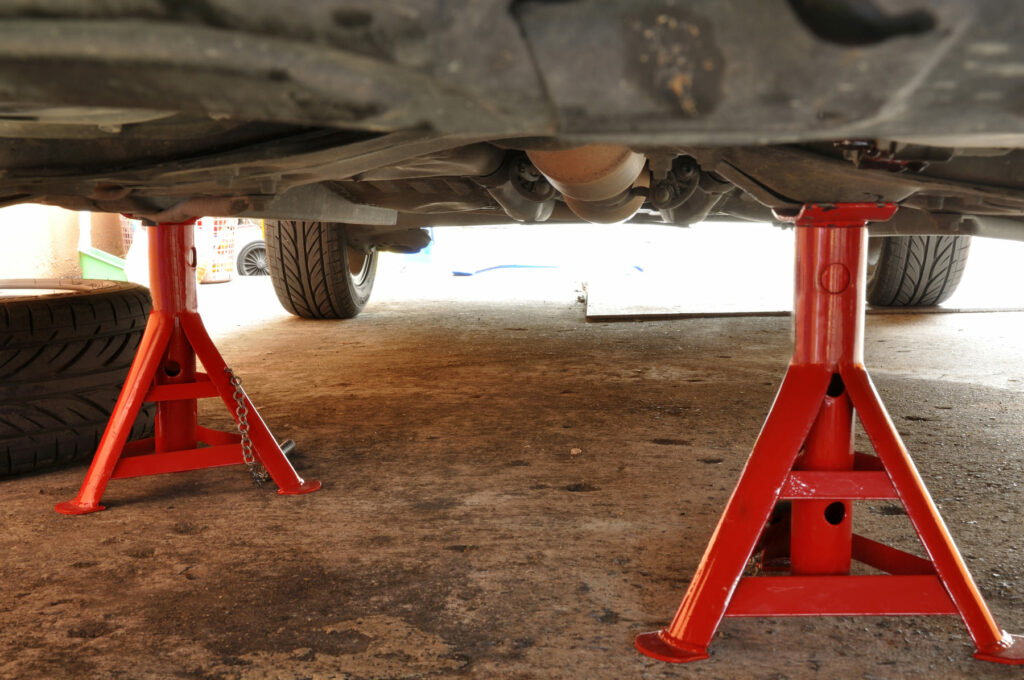
Anytime you are working on car be-careful working below any car. Check you owners manual to check how to correct setup the stands. In most cases you’ll want to set them up on the frame of the vehicle. Raise the vehicle’s frame using a car jack at the appropriate points. Also consider placing a tire next to your working area as an emergency. If one of jack stands fall at least you’ll have safety net.
Please get rid of the faulty oxygen sensor by removing it. The oxygen sensor is often found on the passenger side.
Step 2: Locate the O2 sensor that is bad and remove.
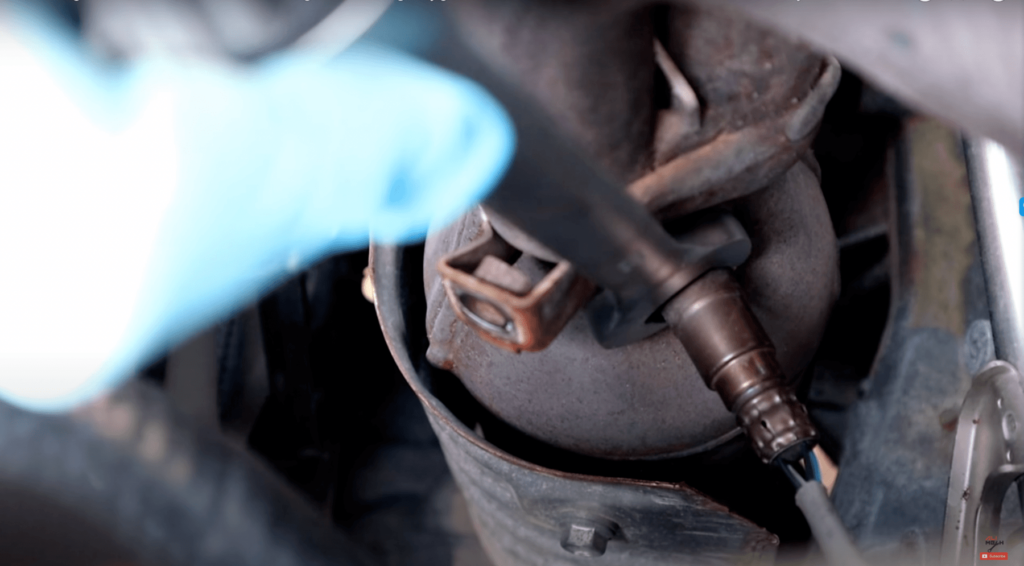
The sensor in most is located next to the catalytic convertor. Some cars have the sensor on the exhaust manifolds. Remove the bad sensor by unscrewing its bolt with the socket wrench. They are directly attached to the exhaust pipe of the catalytic converter.
Step 3: Discount the sensor wiring plug.
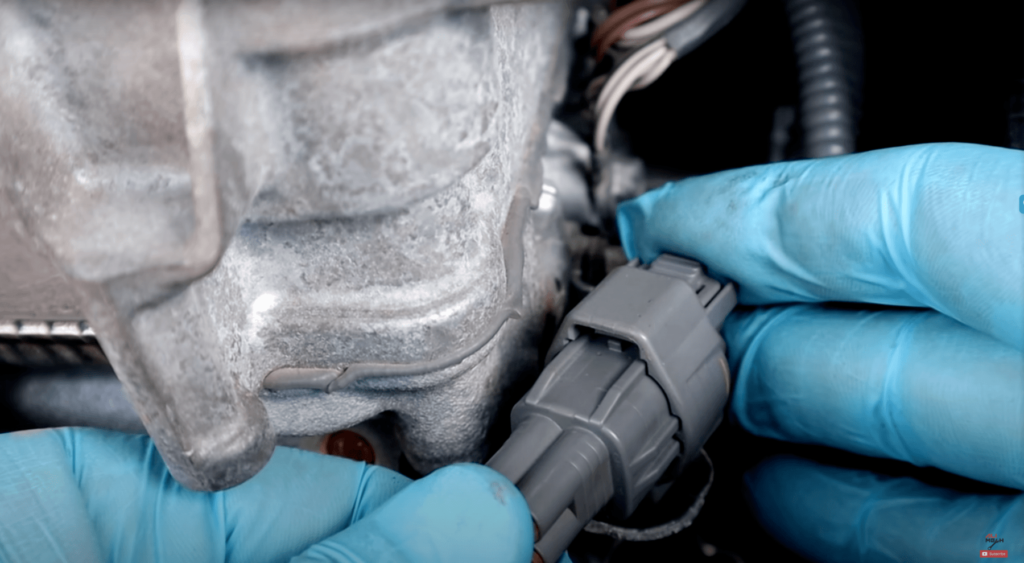
Next you’ll need to press on one side of the wiring plug and plug apart. You’ll need to be careful disconnecting the wiring plug. You don’t want to replace the wiring harness during this step.
Step 4: Remove the sensor off the vehicle
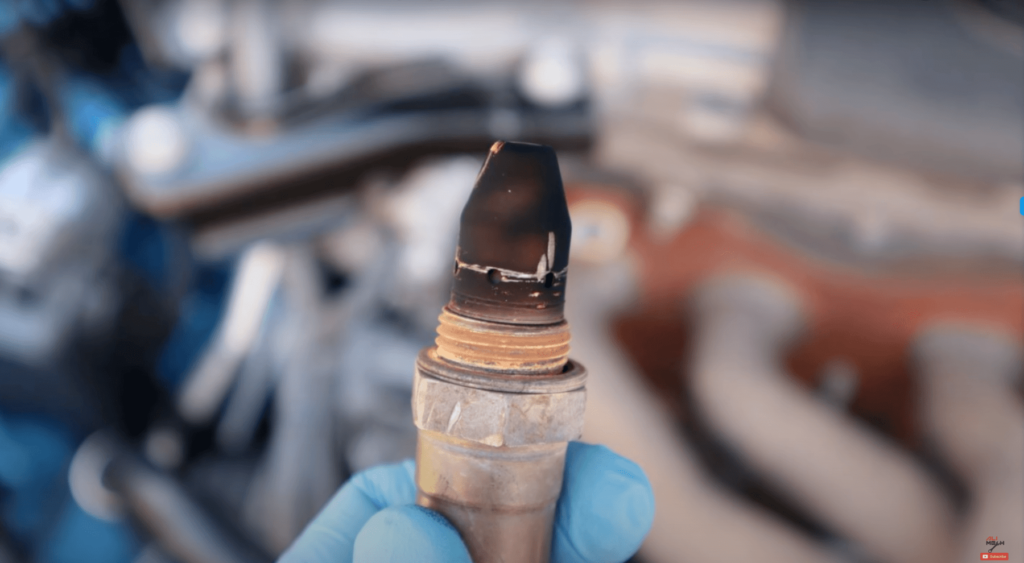
A dirty sensor will look like the picture above. You’ll want to brush off any of the grime using an old tooth brush. It would be best to clean the sensor by scrubbing the end of the tube where it attaches to the device to eliminate any dust or debris that may have settled there. Spray Carb & Choke cleaner into a plastic container. Insert the sensor’s tube half into the container and leave the wiring out of the solution. You want to make sure to avoid any sparks or anything that might cause a fire. If you have the time leave it alone for the night. The next day, take the sensor out of the container remove any grim using a brush.
Step 5: Use Carb and Choke Cleaner
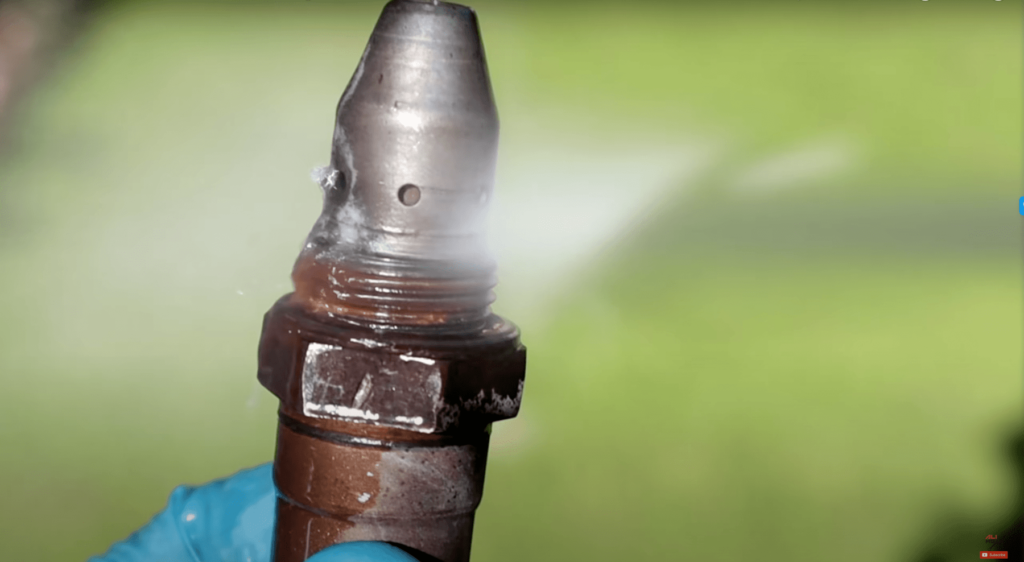
Use a carburetor cleaner to spray inside all the small holes on the sensor. The goal to clean out any grime. Use a toothbrush to remove left over grime. Using a shop rag wipe down the sensor. Make sure to be careful with this method.
Complete: Reinstall and Plug the Sensor Electrical Plug
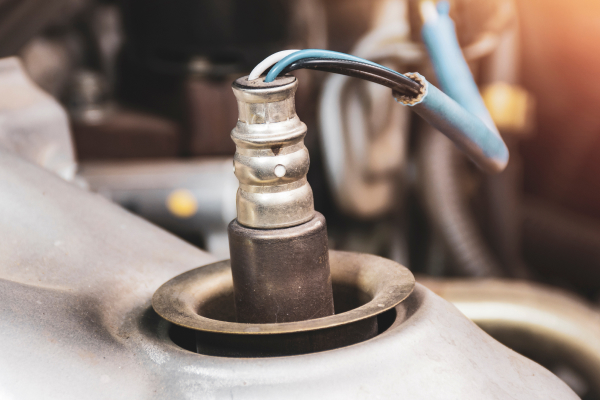
Reinstall the sensor and secure it in place. It would be best if you used the socket wrench to secure the sensor in place. Connect the sensor’s electrical wire harness once again. Nice, you’ll completed the patch job. This should get you a lot of miles on the old O2 sensor before replacing it.
What are the Signs of a Bad Oxygen Sensor?
All sorts of issues can arise if the O2 sensor is malfunctioning. Here is a list of bad O2 sensor symptoms:
Rough Idling
You should check your oxygen sensor if your engine is idling roughly. It could very well be the cause of the weak engine performance. When accelerating, the engine is hesitant and has a rough idle. A bad oxygen sensor is one potential cause of these problems and should be checked immediately.
Failed Emissions Testing
Emissions testing is a vital component of every vehicle examination. They play an important role in ensuring that vehicles function within the law and are safe to use. When an automobile does not pass its emissions test, it may be because of an issue with the oxygen sensor.
Gas Mileage Decrease
If you’ve seen a decline in your car’s gas mileage, the O2 sensor may be at fault. The oxygen sensor in your car controls the ratio of air to fuel. But when it’s terrible, your automobile might be unable to maximize its fuel efficiency, leading to a poor fuel economy.
Weak Engine Performance
Poor engine performance is not a typical occurrence in a car. A bad oxygen sensor is usually the culprit. If your car’s engine isn’t performing well, the oxygen sensor may need to be changed.
Strange Engine Noises
An O2 sensor problem may cause engine noise. A malfunctioning oxygen sensor can result in three distinct types of engine noise:
Knocking Noise
If the engine’s air-fuel ratio is too low, a squealing sound will result. If your O2 sensor malfunctions, your engine will run too lean and make a knocking sound.
Pinging Noise
When the air-fuel ratio in the engine is off, a roaring sound is produced. Pinging noises can be caused by running the engine excessively rich due to a bad O2 sensor.
Rattling Noise
A bad O2 sensor hookup typically causes this type of sound. A rattling sound will result from a loose connector.
Black Exhaust Fumes
Black smoke and increased emissions from the exhaust system could be because of a bad oxygen sensor. It is because an oxygen sensor failure might lead your engine to run rich. If there is too much fuel, the exhaust may become black.
If the sensor isn’t getting enough air, it could be due to an issue with the ventilation system. Because of this, the engine may run rich and emit smoke.
Rotten Egg Smell
If your car’s exhaust system smells like rotten eggs, it may be due to a bad oxygen sensor. The gasoline burns inefficiently because of a bad oxygen sensor; hence, not all fuel is transformed into usable energy.
As a result, much of it is burned in the engine, producing toxic gases that diffuse into the surrounding air. Sulfur dioxide, the major component responsible for the rotten egg odor, is released in these vapors.
Although there are other possibilities, a faulty oxygen sensor is the most prevalent cause of the odor in a car. According to estimates, about 75% of cars with the odor have a faulty oxygen sensor.
Engine Misfires
An O2 sensor malfunction or a malfunctioning cylinder contributes to an engine misfire. A misfire throws the engine’s balance off, sending a jolt of vibration through the car’s frame. It also considerably reduces the engine’s output of useful power.
Overheating Engine
A malfunctioning oxygen sensor may also cause an overheating engine. The sensor’s inaccurate air-fuel ratio reading is the most common cause of this problem. As a result, the engine may overheat from operating too richly or too leanly. Having a bad sensor can cause the engine to stall.
Sudden Catalytic Converter Failure
Bad oxygen sensors often manifest as an unexpected breakdown of the catalytic converters. The oxygen sensor reports its readings to the ECU, which monitors the air ratio to fuel. A catalytic converter can overheat and fail if the air-fuel mixture isn’t properly balanced, which happens when it fails.
Flashing Check Engine Light
One of the most common signs of a malfunctioning oxygen sensor is a constantly on “check engine” light. It happens when the oxygen sensor fails to read oxygen concentration in the exhaust accurately. Because of this, the engine won’t be able to regulate the air-fuel ratio as it should, and that might lead to wear and tear on the engine over time.
What happens if you keep driving with a bad O2 sensor?
Someone could potentially drive with a bad oxygen sensor. However, it’s not a good idea to risk the engine’s health that results in engine damage by continuing to drive with a broken O2 sensor. Sticking to posted speed limits makes navigating with a faulty oxygen sensor possible. Rather than risk driving with a faulty O2 sensor, it is best to have an oxygen sensor replacement.
O2 sensors are responsible for monitoring the amount of oxygen in a car’s exhaust. Too little oxygen could indicate that the engine is running too lean, while too much oxygen could mean that the engine is running too rich. Either way, the O2 sensor can help make adjustments to keep the engine running as efficiently as possible.
Conclusion
If you’re having any of the issues described in this article, it’s probably because your O2 sensor is broken and needs replacing. Use a brush with a strong carb cleaning spray to remove any grime off the O2 Sensor as a short term solution. Temporary fix for bad O2 sensors can be done safely.
Most vehicles’ oxygen sensors can be swapped out without any trouble. It is doable with standard auto repair equipment. If this is not something you are familiar with, you can always have a professional technician take care of it.

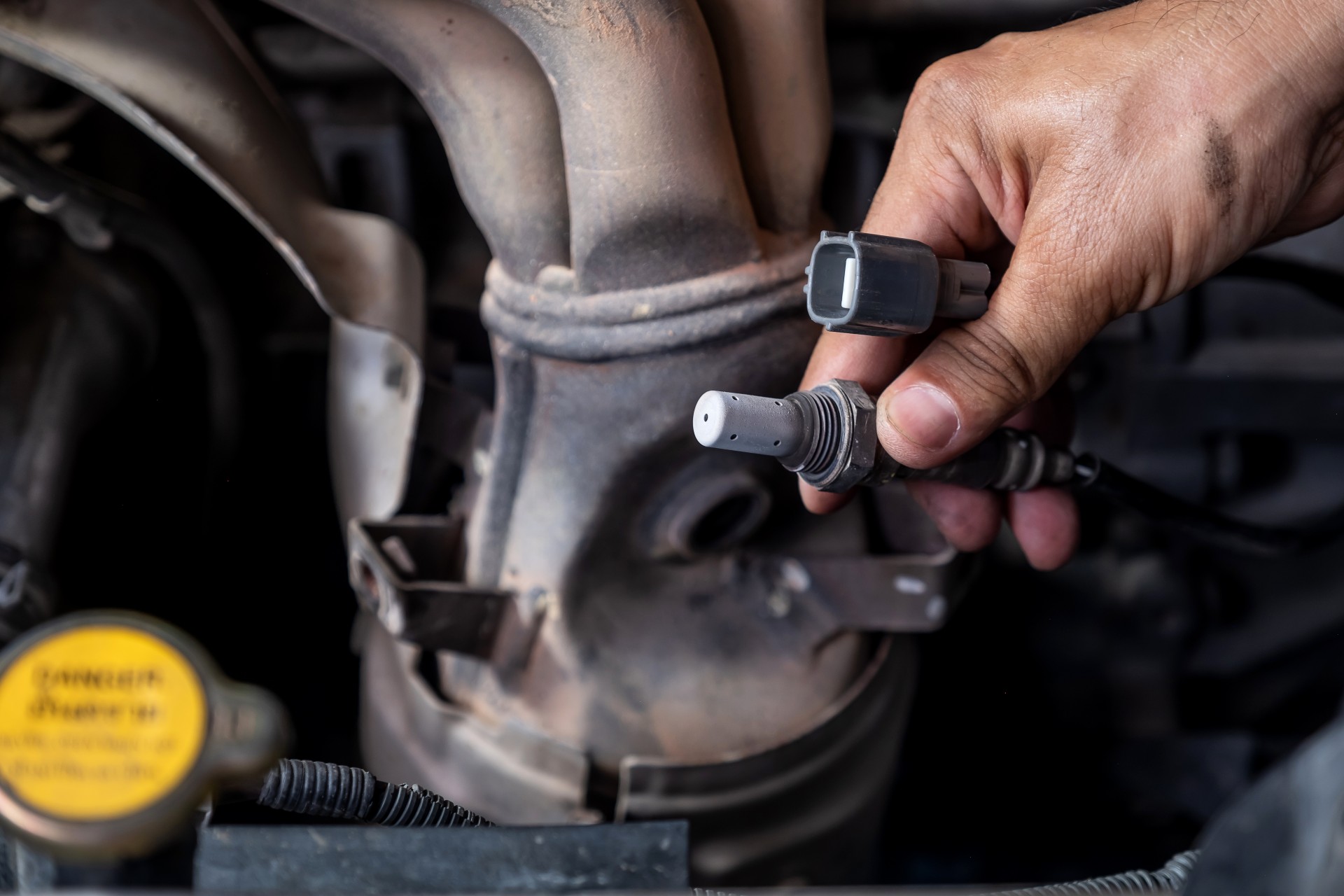
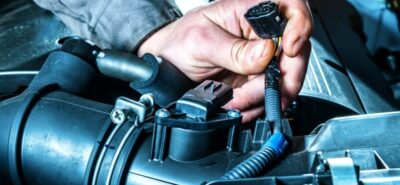

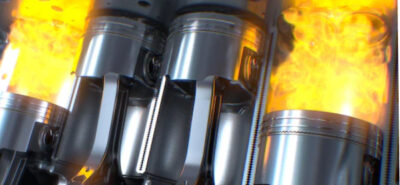


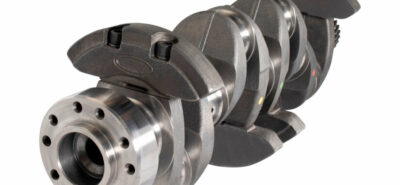
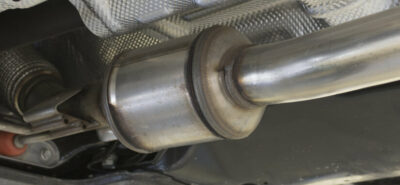

![Can a weak alternator cause poor engine performance? [Yes & No], (speedalternators.com)](https://speedalternators.com/wp-content/uploads/2022/09/weak-alternator-e1677554040758-400x185.png)

Leave a Reply